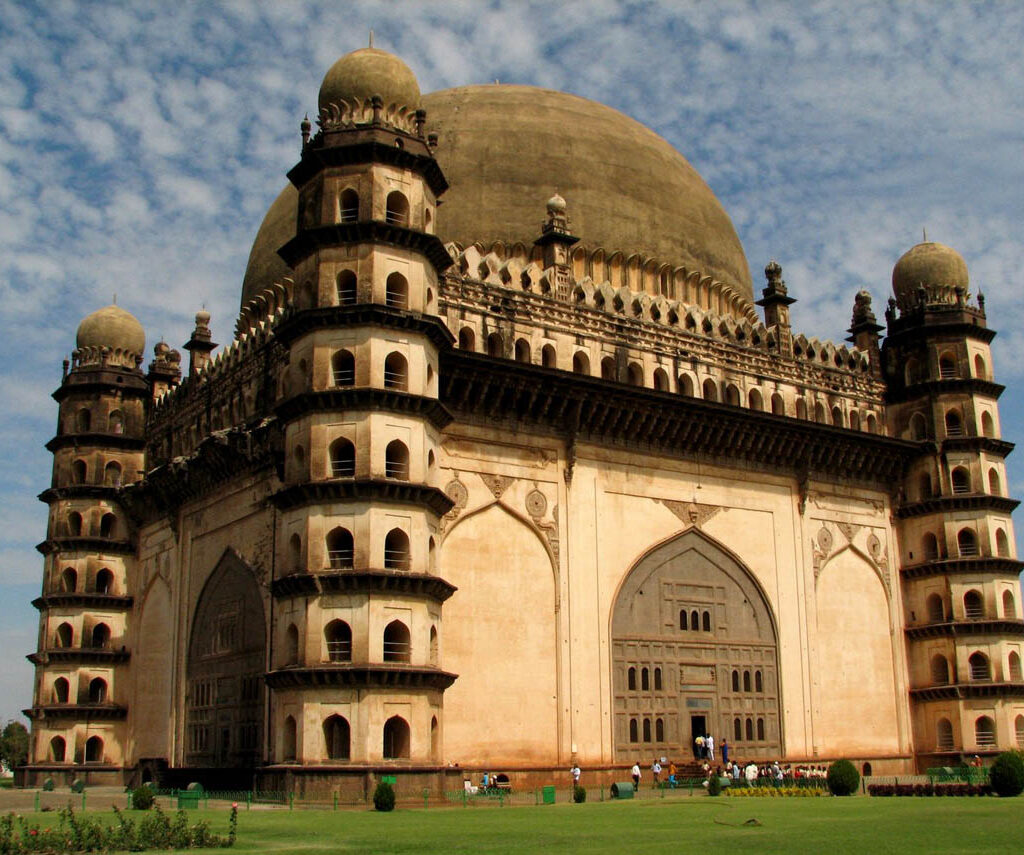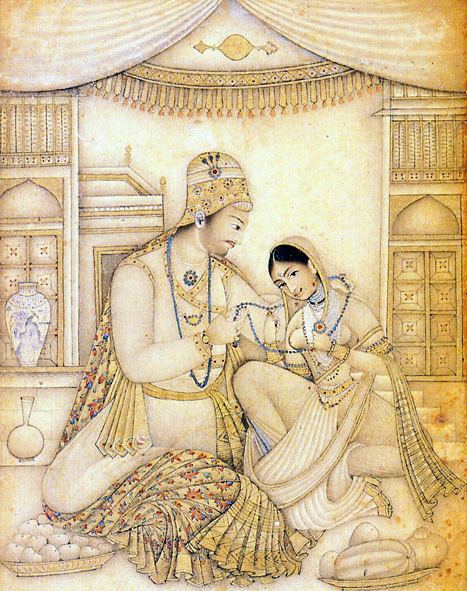
Patrons of the Decani School of Miniature Painting
Introduction:
The Deccan region of India has witnessed the rise and fall of several powerful dynasties throughout history. Two notable dynasties that left an indelible mark on the Deccan’s cultural, political, and architectural landscape are the Adil Shahi and Nizam Shahi dynasties. This article aims to provide a comprehensive overview of these dynasties in simple words for Class XII students, shedding light on their origins, accomplishments, and contributions to the rich tapestry of Indian history.
1. The Adil Shahi Dynasty:
1.1 Origins and Establishing Power:
The Adil Shahi dynasty emerged in the early 15th century, establishing its capital in Bijapur (present-day Karnataka). Yusuf Adil Shah, a prominent general in the Bahmani Sultanate, declared independence and laid the foundation of the dynasty. Under subsequent rulers, including Ismail Adil Shah and Ibrahim Adil Shah, the dynasty expanded its territories, embracing a blend of Persian, Turkish, and indigenous Indian cultural influences.
1.2 Cultural Patronage and Architecture:
The Adil Shahi rulers were great patrons of art, literature, and architecture. They commissioned the construction of splendid monuments, palaces, mosques, and tombs. The Gol Gumbaz, an architectural masterpiece and the mausoleum of Mohammed Adil Shah, is a testament to their architectural prowess. The dynasty also fostered the growth of the Bijapuri school of painting, known for its distinctive style and vibrant colours.
1.3 Contributions to Literature and Music:
During the Adil Shahi rule, Bijapur became a centre for literary and musical pursuits. Notable scholars and poets such as Allama Muhammad Hashim, Fakhr al-Din Nizami, and Sufi poet Shah Muhammad Darwesh contributed significantly to the literary and cultural heritage of the region. The court of Ibrahim Adil Shah II attracted renowned musicians and composers, leaving a lasting impact on Decani music.
2. The Nizam Shahi Dynasty:
2.1 Establishment and Seat of Power:
The Nizam Shahi dynasty emerged in the late 15th century, with Ahmadnagar (in present-day Maharashtra) as its capital. Malik Ahmad Nizam Shah I, a distinguished military commander of the Bahmani Sultanate, founded the dynasty. The Nizam Shahis established themselves as independent rulers, focusing on consolidating their territories and defending against external threats.
2.2 Architectural Marvels and Urban Planning:
The Nizam Shahi rulers contributed significantly to the architectural landscape of the Deccan. They constructed fortresses, palaces, and mosques, incorporating elements of Persian, Indian, and Islamic architectural styles. The Ahmednagar Fort, Daulatabad Fort, and the Chand Bibi Palace are noteworthy examples of their architectural prowess. The Nizam Shahis also emphasized urban planning and infrastructure development, creating well-designed cities and public spaces.
2.3 Promotion of Language and Literature:
Under the Nizam Shahi dynasty, Ahmadnagar became a centre of learning and scholarship. The rulers patronized poets, scholars, and intellectuals, leading to the development of the Ahmadnagari script and the growth of literature in the region. The renowned poet and composer, Malik Muhammad Jayasi, who authored the epic poem “Padmavat,” was associated with the Nizam Shahi court.
3. Similarities and Legacy of the Dynasties:
Both the Adil Shahi and Nizam Shahi dynasties shared several similarities and contributed to the cultural, artistic, and political landscape of the Deccan region. They were both influenced by Persian and Indian cultural traditions, and their patronage of arts, architecture, and literature left a lasting legacy. The Decani Sultanates played a vital role in fostering trade and cultural exchanges with neighboring kingdoms and empires.
Rulers of the Adil Shahi and Nizam Shahi Dynasties
Introduction:
The Adil Shahi and Nizam Shahi dynasties were two prominent ruling houses of the Deccan region in India. These dynasties played a crucial role in the patronage and development of the Deccani School of Miniature Painting, a distinctive art form that flourished during their reigns. In this article, we will explore the rulers of the Adil Shahi and Nizam Shahi dynasties in detail, highlighting their contributions to the art of miniature painting and their impact on the cultural landscape of the Deccan.
I. Rulers of Adil Shahi Dynasty:
1. Yusuf Adil Shah (1490-1510):
Yusuf Adil Shah was the founder of the Adil Shahi dynasty. He served as a prominent general in the Bahmani Sultanate before declaring independence and establishing the Adil Shahi kingdom with Bijapur as its capital. While his reign predates the formal development of the Decani School of Miniature Painting, his patronage of arts laid the foundation for future artistic endeavors.
2. Ismail Adil Shah (1510-1534):
Ismail Adil Shah, the son of Yusuf Adil Shah, ascended the throne after his father’s death. He was a patron of literature, music, and the arts, contributing significantly to the development of the Deccani School of Miniature Painting. Under his patronage, Bijapur emerged as a cultural hub, attracting skilled artists and craftsmen. Ismail Adil Shah’s reign saw the early stages of the school’s evolution, with artists experimenting with different styles and techniques.
3. Ibrahim Adil Shah I (1534-1557):
Ibrahim Adil Shah I was an accomplished ruler and a great patron of the arts. He provided extensive support to the Deccani School of Miniature Painting, fostering its growth and refinement. During his reign, Bijapur witnessed a flourishing artistic scene, with artists producing exquisite miniatures that captured the grandeur of the court, portraits of the nobility, and intricate illustrations of historical events.
4. Ali Adil Shah I (1557-1579):
Ali Adil Shah I, the son of Ibrahim Adil Shah I, continued the tradition of artistic patronage. He was deeply interested in architecture and contributed to the construction of magnificent structures like the Gol Gumbaz. While he may not have been directly involved in the creation of miniatures, his support for the arts and architecture influenced the overall cultural milieu of the Adil Shahi dynasty.
5. Ibrahim Adil Shah II (1580-1627):
Ibrahim Adil Shah II was a renowned ruler of the Adil Shahi dynasty, whose reign witnessed significant developments in the Decani School of Miniature Painting. He attracted skilled artists to his court, and his patronage resulted in a golden era for the art form. The Bijapur school of painting, influenced by Persian and Indian artistic traditions, flourished during his reign, producing masterpieces that showcased the delicate brushwork, intricate details, and vibrant colours characteristic of the Decani miniature style.
II. Rulers of Nizam Shahi Dynasty:
1. Malik Ahmad Nizam Shah I (1490-1510):
Malik Ahmad Nizam Shah I, a distinguished military commander, founded the Nizam Shahi dynasty and established Ahmednagar as its capital. While his reign predates the formal development of the Decani School of Miniature Painting, he laid the groundwork for artistic patronage within the dynasty.
2. Burhan Nizam Shah (1508-1553):
Burhan Nizam Shah, the son of Malik Ahmad Nizam Shah I, ascended the throne and contributed to the growth of the Decani School of Miniature Painting. His court became a centre of artistic activity, attracting skilled artists who produced miniatures reflecting the royal court, hunting scenes, and portrayals of courtly life. The art form flourished under his patronage.
3. Hussain Nizam Shah I (1553-1565):
Hussain Nizam Shah I succeeded his father, Burhan Nizam Shah, and continued the dynasty’s support for the arts. Although historical records do not extensively document his specific contributions to the Decani School of Miniature Painting, it is believed that his reign saw the continuation of artistic patronage, ensuring the growth and sustenance of the art form.
4. Murtaza Nizam Shah I (1565-1588):
Murtaza Nizam Shah I, the son of Hussain Nizam Shah I, ascended the throne at a time of political turmoil. Despite the challenging circumstances, he continued to support the arts, including the Decani School of Miniature Painting. The miniatures produced during his reign often depicted scenes from his court and showcased the skill and expertise of the artists under his patronage.
5. Burhan Nizam Shah II (1588-1591):
Burhan Nizam Shah II’s reign was short but impactful. He furthered the dynasty’s support for the arts and played a crucial role in the growth of the Decani School of Miniature Painting. The miniatures produced during his reign demonstrated a refined style, intricate detailing, and a heightened sense of aesthetics.
6. Ibrahim Nizam Shah (1591-1626):
Ibrahim Nizam Shah, the last significant ruler of the Nizam Shahi dynasty, continued to patronize the arts and contributed to the development of the Decani School of Miniature Painting. His reign witnessed a fusion of Persian, Mughal, and indigenous Indian influences in the miniatures, reflecting the artistic cross-pollination of the time.
Conclusion:
The rulers of the Adil Shahi and Nizam Shahi dynasties played a vital role in the patronage and development of the Decani School of Miniature Painting. Through their support and encouragement, they created an environment conducive to artistic expression, attracting talented artists to their courts. The miniatures produced during their reigns serve as valuable glimpses into the rich cultural heritage of the Deccan, showcasing the skill, creativity, and artistic vision of the artists associated with these dynasties. The Adil Shahi and Nizam Shahi rulers left an enduring legacy as patrons of the Decani School of Miniature Painting, contributing to the artistic landscape of the region.

Its superb as your other blog posts , appreciate it for posting.